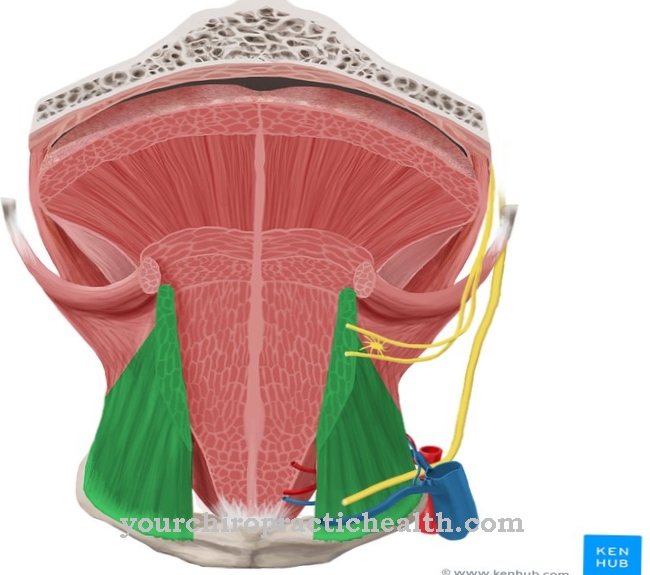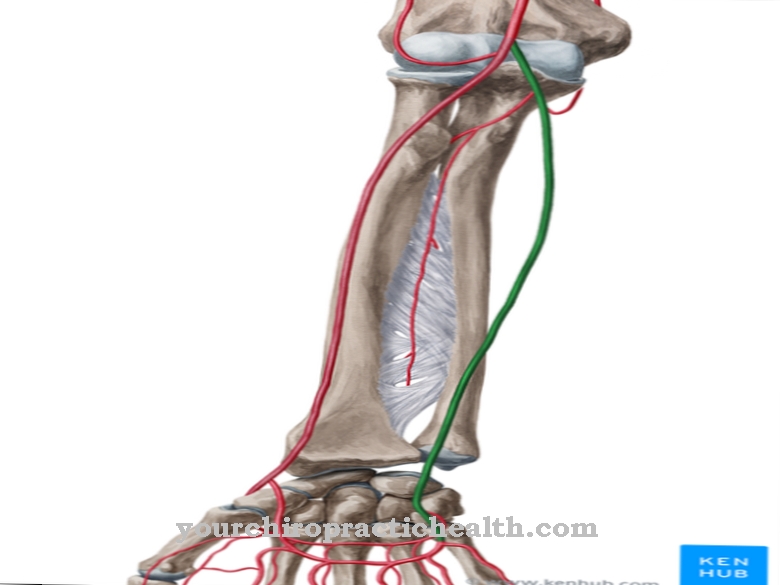Why is that natural denture so important for the human organism? Answers are provided in the brief overview of the definition, structure, function and diseases of the dentition and its components.
What is the dentition?

As a natural denture defines the totality of all teeth that a person will grow in the course of their life. The dentition is part of the digestive system, as the teeth together with the tooth-supporting apparatus, upper and lower jaw, jaw joint, masticatory muscles and the associated soft tissue form the chewing organ.
With deciduous teeth and permanent teeth, a person gets teeth twice in his life. These are created in the jawbone from birth. During the first tooth eruption from the sixth month of life, the milk teeth form.
The 20 milk teeth are also known as milk teeth. From the age of six the permanent set of teeth develops with 32 teeth. The transition from the deciduous dentition to the permanent dentition takes several years and is known as the mixed dentition.
Anatomy & structure
The natural is built up denture with one row of teeth each in the upper and lower jaw. Starting from the center of the face, the dentition is divided into a total of four halves of the jaw. The deciduous teeth consist of two incisors, one canine and two small molars, the deciduous molars, per half of the jaw.
In contrast to this, the permanent set of teeth has two large molars plus one wisdom tooth in addition to the small molars (premolars). The teeth sit in tooth sockets in the upper and lower jaw. However, they are not fused with the jawbone. The teeth are held in the jaw by the tooth-holding apparatus, which consists of various holding and ligament structures.
A special feature in the functional structure of the chewing organ is the U-shaped curved lower jaw. Attached to the skull bone on the right and left via the jaw joints, it is the only movable bone on the head.
Functions & tasks
For the various functions of the Dentition the mobility of the lower jaw is very important. On the one hand, the teeth are needed for pronunciation. So-called tooth sounds (dentals) can only be formed with the help of the teeth. The more teeth are missing, the less clear the pronunciation becomes.
In addition to the speech function, the teeth are especially important for the digestive system, as the teeth serve to take in and chop up food. The groups of teeth each have their own task. The food is bitten off with the sharp-edged incisors. Due to their long roots, the canines are very stable and can hold the food well. In addition, the tapering shape of the canine crown enables the food to be torn apart.
In the posterior region, the teeth have wide chewing surfaces. In this way, the food is first crushed further by the small molars and then ground by the large molars. This makes it easier to salivate the food in preparation for digestion. Last but not least, teeth have an aesthetic function. A complete set of teeth supports and shapes the mouth area and is partly responsible for the proportions of the face.
Illnesses & ailments
A common disease of the teeth is tooth decay, the so-called tooth decay. Caries occurs when microorganisms (bacteria) can permanently attach themselves to the tooth together with the food.
If this bacterial plaque adheres to the tooth, the bacteria metabolize ingested carbohydrates such as sugar to acid, which causes demineralization of the tooth structure. If left untreated, tooth decay leads to the destruction of tooth structures. In addition, the tooth nerve can become inflamed (pulpitis), which usually leads to the death of the tooth. More than 95 percent of Europeans are affected by tooth decay. This makes it the most common infectious disease in industrialized countries.
If the plaque is not removed, the saliva composition can calcify it and tartar will develop. This is often a cause of periodontal disease. These include inflammation of the periodontium, colloquially known as periodontal disease, as well as inflammation of the gums.
In addition, changes in the dentition such as tooth loss or misalignment can lead to incorrect functional loads and thus to discomfort in the temporomandibular joint.
In summary, the natural teeth are not only an important building block for the function of the entire body system. Teeth also express social status in society through their external appearance.
You can find your medication here
➔ Toothache medicationTypical & common dental diseases
- Tooth loss
- Tartar
- Toothache
- Yellow teeth (tooth discoloration)


.jpg)









.jpg)

.jpg)
.jpg)











.jpg)